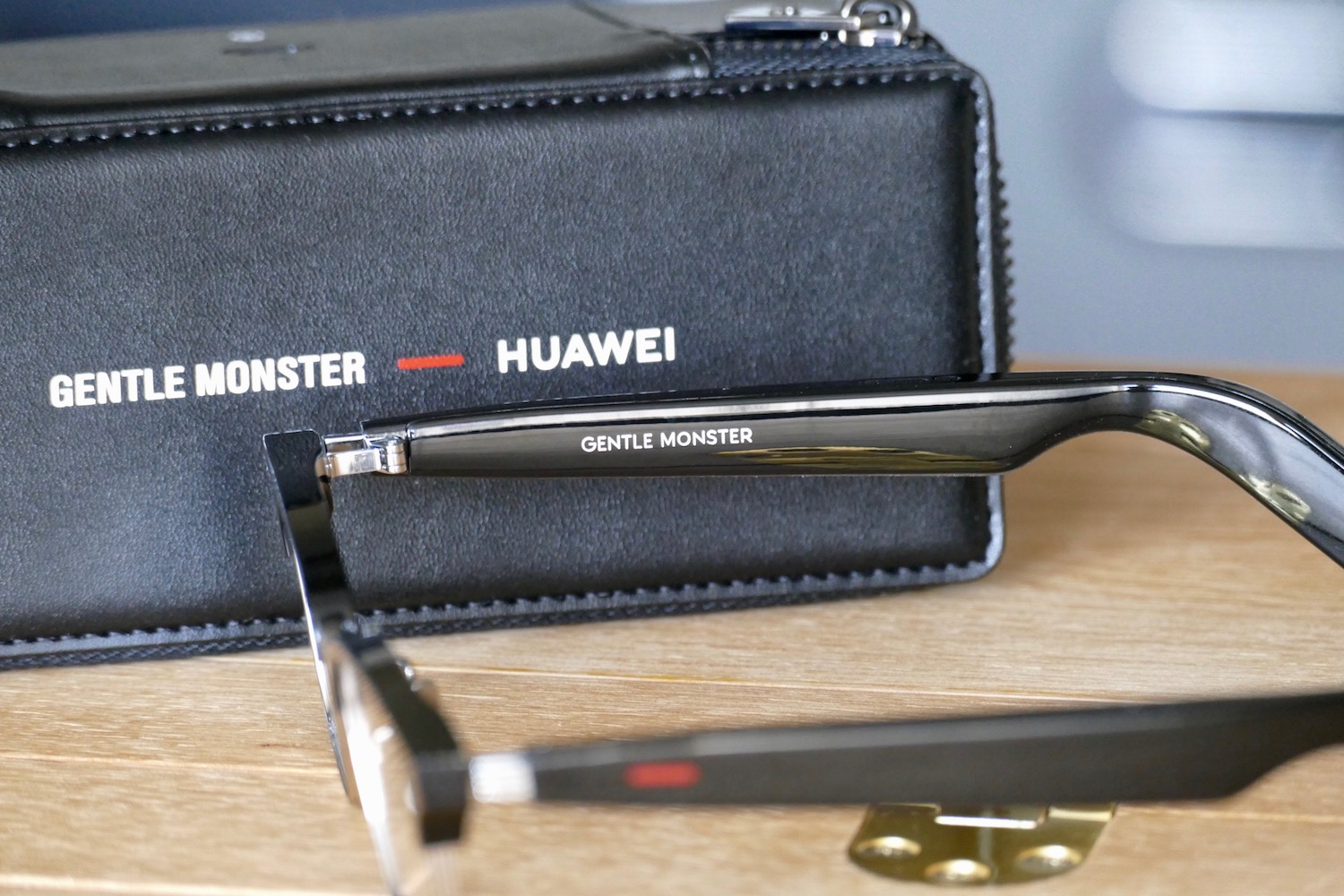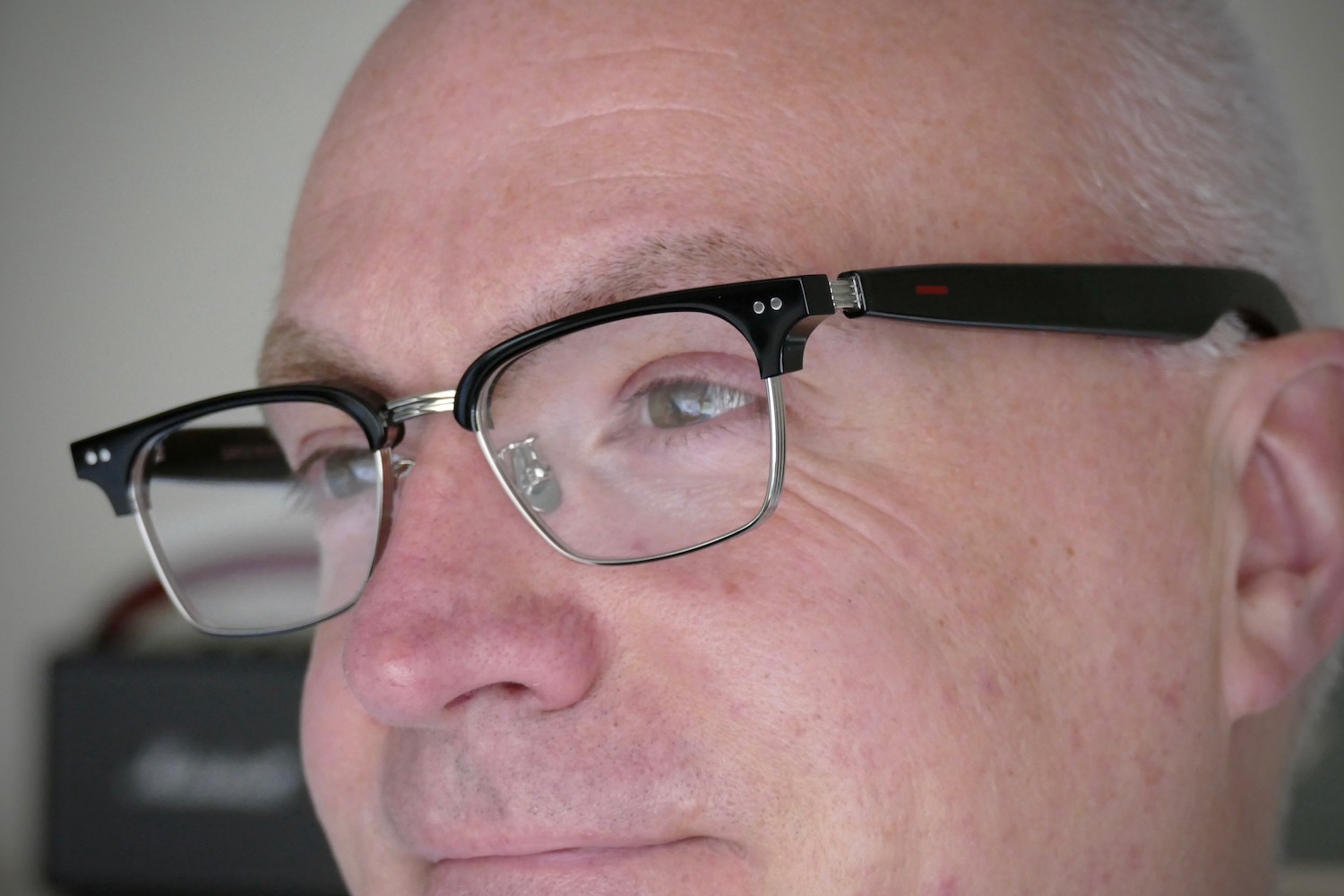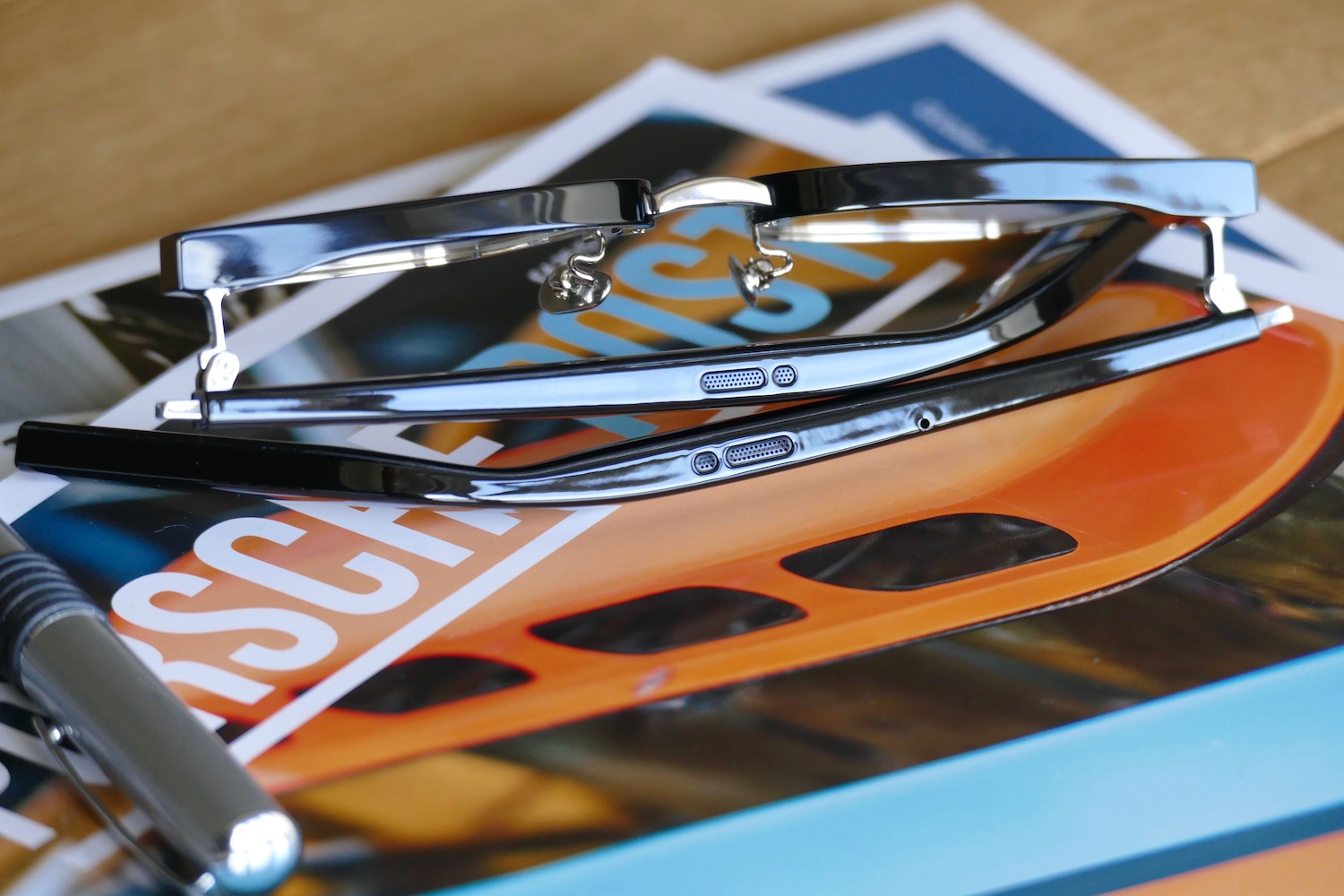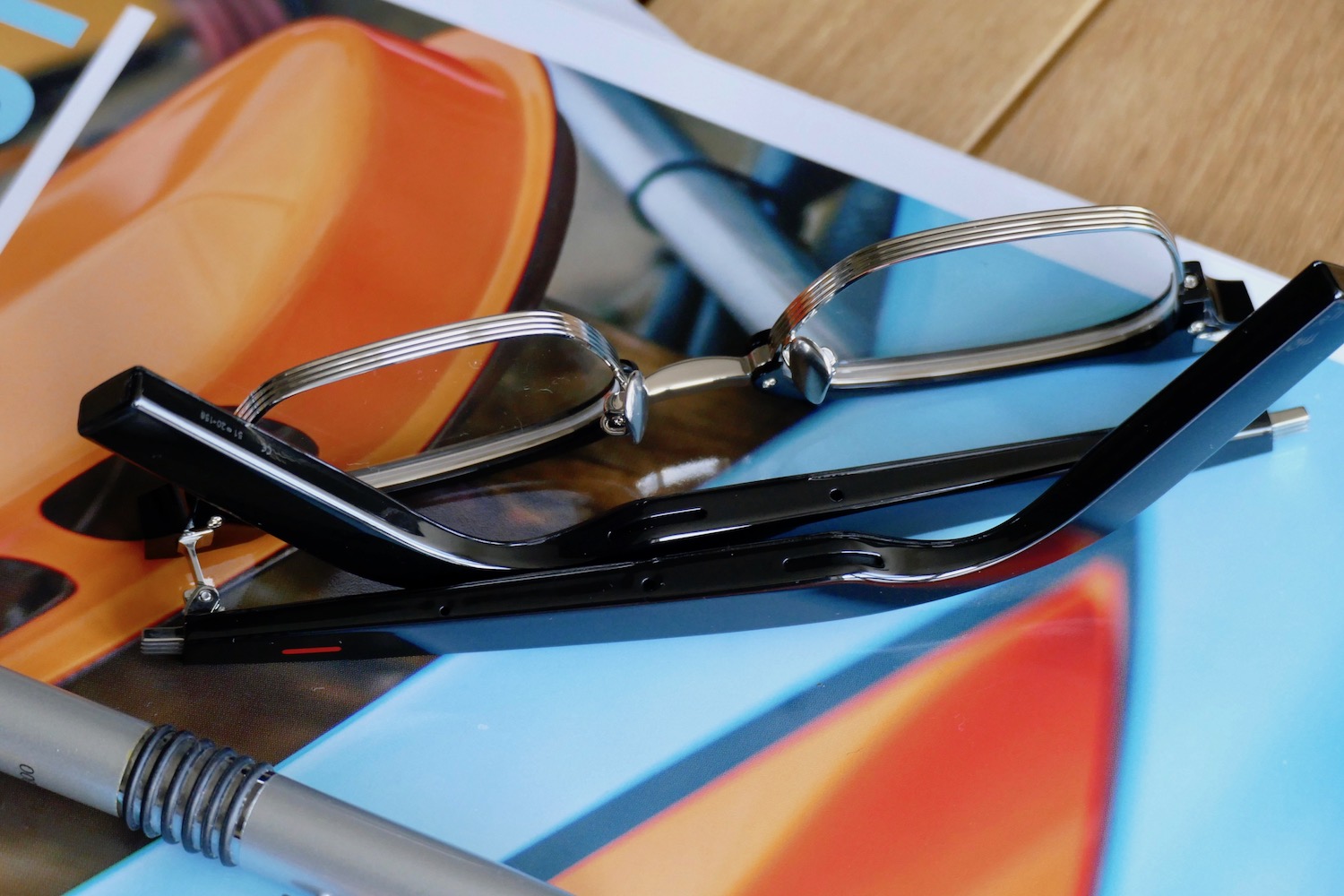Huawei, in the face of challenges in the smartphone space, is exploring one of the more difficult products in the wearables space, smartglasses, to propel the brand forward. It’s new offering is the Huawei X Gentle Monster Eyewear 2 — and it’s about as risky as tech products get.
Wearables, in particular smartglasses, need to enhance your life without being intrusive. It’s a simple formula, but one that’s very hard to get right. Not being intrusive means having a design that’s as “normal” as possible, and that’s hard to do when something needs to attach to our face — and inevitably still require everything from Wi-Fi and Bluetooth radios to batteries inside.
I’ve worn the Eyewear 2 smartglasses for a short time, so did I see the future, or the ghost of Google Glass?
Why are smartglasses such a challenge?
Spectacles are, without a doubt, one of the hardest buying decisions I make on a semiregular basis. I’ve put less thought into buying cars and houses, as you can easily try on 50 pairs and only find one that looks simply OK, but not good enough to actually buy. The way they look and feel is extremely important, and all this puts tech firms working on smart specs at a huge disadvantage.

Proof? If you browse Tom Ford’s eyewear collection, the choice of frame designs extends well into the hundreds, as does Ray-Ban’s and those of many other brands. Tech companies are not in a position to offer such a massive choice. Bose Frames come in two designs, Snapchat Spectacles come in three, and when North Focals were a thing, there were only two different designs available. If you’ve ever bought spectacles, then you’ll know a choice of two designs is no choice at all.
Huawei has four options, two sunglasses and two with clear lenses ready for prescription glass. Huawei knows it’s a tech brand, and while it’s good at design, it’s not an expert in everything, so it teamed up with Gentle Monster again to design the frames. It’s the right decision, although choosing Gentle Monster is a daring one, as the brand’s bold designs usually aren’t for the shy. Thankfully, the models in the smartglasses range are understated compared its usual standards.

A lineup of four models puts Huawei ahead of the competition — but not in a meaningful way. Instead it’s the Gentle Monster partnership that’s the largest step in the right direction. Leaving design to the experts makes a big difference, because it means the glasses feel like proper glasses and should be comfortable to wear all day. That takes knowledge and expertise, and handing it off to an established player gives Huawei a key advantage.
Havana. here I come
Huawei sent me the Eyewear 2 in the Smart Havana design to try out. So, could they replace my trusty Tom Fords? No, but not because of a technical issue. They are ready for prescription lenses, but it wasn’t possible to fit them into my sample. This was a real shame, as after only a short time wearing them, I saw potential. But because I couldn’t actually see while wearing them, this went largely unexplored.

The Havanas are beautifully made, and there’s plenty of lovely detail throughout. The frame is plastic with metal accents and a metal surround on the lower part of the lenses, and it weighs 44 grams in its guise here. This may change depending on your prescription needs, and for reference, my own normal glasses weigh 33 grams. The arms are quite thick, but the size is disguised well when looking at them from the sides, although you do feel the additional girth above and behind your ears.
Ten grams may not sound like much, but I definitely noticed the additional weight on the bridge of my nose. Getting the fit right at home is difficult too. Getting glasses fitted by an optician is preferable, and a perfectly comfortable fit with correctly aligned optics is much harder to achieve at home. The small print on Huawei’s site says you can’t apply heat to the arms on the Eyewear II either, a common practice when an optician adjusts spectacles to properly sit on your face.

To help you choose the design that’s likely to be best for you, Huawei provides some measurements and advice on its site. I like the design of the Smart Havanas but I’m not sure they suit me very well, so I’d want to try the slightly larger Smart Kubo model, too. If they don’t suit me either, then the Eyewear II won’t be for me. That’s the ultimate problem with smartglasses — if the provided designs don’t suit you, you probably won’t buy them.
Listen up
The way smartglasses look is only the first part of the equation — they also need to provide meaningful functionality to encourage us to buy and wear them. Huawei’s Eyewear 2 are an alternative to true wireless Bluetooth headphones, replicating some of the smarter features recently introduced on the most popular earbuds. In fact, that’s how best to think of them: True wireless spectacles.

Each arm has a single 128mm dynamic driver inside, along with gesture-recognition sensors to control the spectacles. They connect to your phone using Bluetooth for you to play audio, talk to your virtual assistant, and answer calls. Eyewear II doesn’t have a camera or screens, or sensors that track activity or movement. Is that enough to make you pay at least 310 British pounds ($410 U.S.)?
The speakers don’t use bone conduction, but the sound leakage is minimal at normal volumes — just don’t expect total privacy. I didn’t find the quality good enough to enjoy music, with bass response in particular distorting at higher volumes, but it’s fine for games and YouTube video watching. It’s for voice where Eyewear 2 works best, and this aspect made me wish I could see while wearing them to use them more.
Listening to podcasts or spoken word is where Eyewear 2 really excels. I used the glasses connected to my iPhone 12 Pro, and Siri can be called up with a tap of the left arm and told to play my favorite podcast. Voices are clear and stereo separation is great, so it all sounds very centered. There’s no sound isolation, though, so in loud environments, you won’t hear much. There’s an autopause feature that activates when removing the glasses, and reconnection works well went you put them back on.

Huawei’s Eyewear II aren’t what you’d call feature-packed, but the clear sound and overall ease of use means that what’s there is useful.
App, battery, and charging
Power is delivered by an 85mAh battery, which may sound small, but considering there’s no screen or complex sensor arrays to drive, it’s just about acceptable on paper. Huawei says it will last for five hours of playing music, which is what we’d expect to get from a pair of true

There is an awful “greeting” mode, where the glasses give you a verbal daily update when you first put them on. Thankfully, it can be turned off in the app. The app is not available for iOS, but the glasses connected easily to my iPhone.
Recharging the Eyewear 2 is performed simply by putting them back in the case. This is a clever solution and avoids a USB Type-C or proprietary port on the body of the glasses. However, you do need to carry the case and a USB Type-C cable around with you, as the case does not have a battery inside. This is an unfortunate omission, given the portability of the product.

The case itself has a solid frame covered in a black leather-like material, with a sturdy zipper to keep the glasses safe, while the well-padded interior will protect the lenses too. The glasses have basic splash resistance, but you shouldn’t be wearing them in the shower.
Would I wear them all the time?
If I could have worn the Eyewear 2 and not risked falling down the stairs or crashing the instant I pulled the car out of the driveway, I would have. The style grew on me as I became used to seeing them, and just asking for my podcast to play without having to grab headphones first was helpful. I liked hearing YouTube videos and game audio in the same way. The privacy is oddly intimate.

Taking calls hands-free is also great, and the Eyewear 2 won’t have the same stigma or uncomfortable nature of wearing a single AirPod or similar. The convenience of having an inconspicuous speaker and microphone on your face can’t be understated. It’s unfortunate the Eyewear 2’s functionality ends there, but add in too much extra and the battery has to get bigger, and then you start to have ergonomic problems. At the moment, it’s a decent balance between tech and wearability.
What the Eyewear 2, and Huawei’s partnership with Gentle Monster, does is make me look forward to further iterations, and possible new advances in the underexplored niche of smartglasses. Tech, design, and fashion brands need to collaborate together to create desirable smartglasses. Huawei forges strong, exciting partnerships — see Leica, Porsche Design, and Devialet as evidence — and is in the situation where it needs to push forward with new products that separate it from the competition.
Huawei X Gentle Monster Eyewear 2 smartglasses do tease the exciting future of connected eyewear, and the cool style exorcises the ghost of Google Glass. They’re a brave, confident move into a relatively uncharted area.
Editors' Recommendations
- If you like cheap phones, you’ll love these 2 new Moto G options
- Your Google One plan just got 2 big security updates to keep you safe online
- Wireless charging not working on your Pixel with Android 13? You aren’t alone
- Sound like a pro with Joby’s wireless mic for your phone
- Huawei P50 Pocket rivals Z Flip 3 in design, but not price




